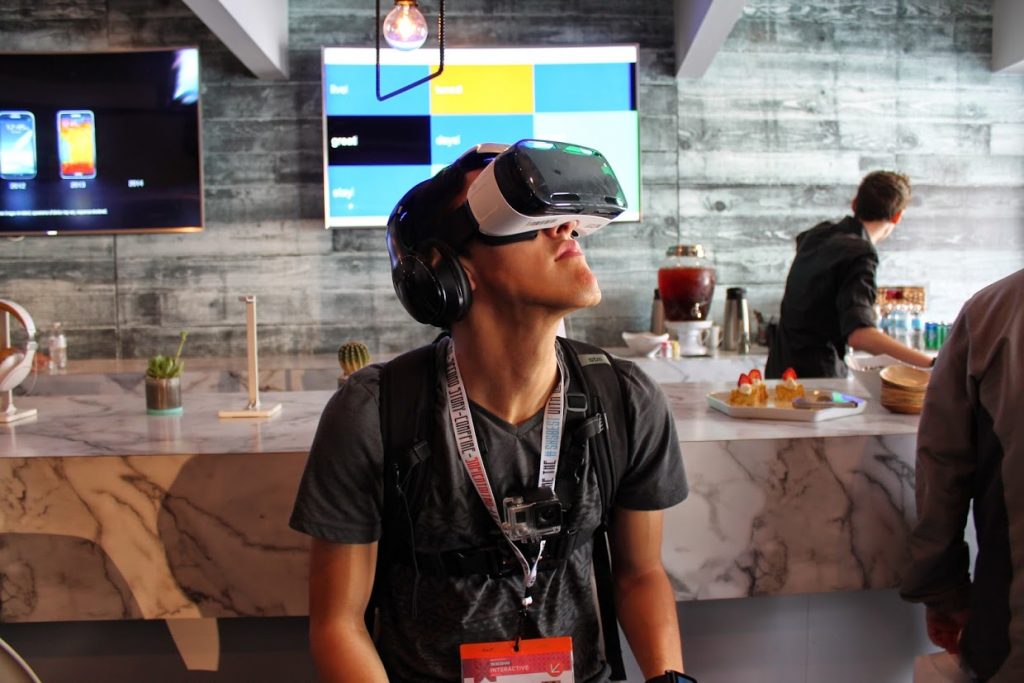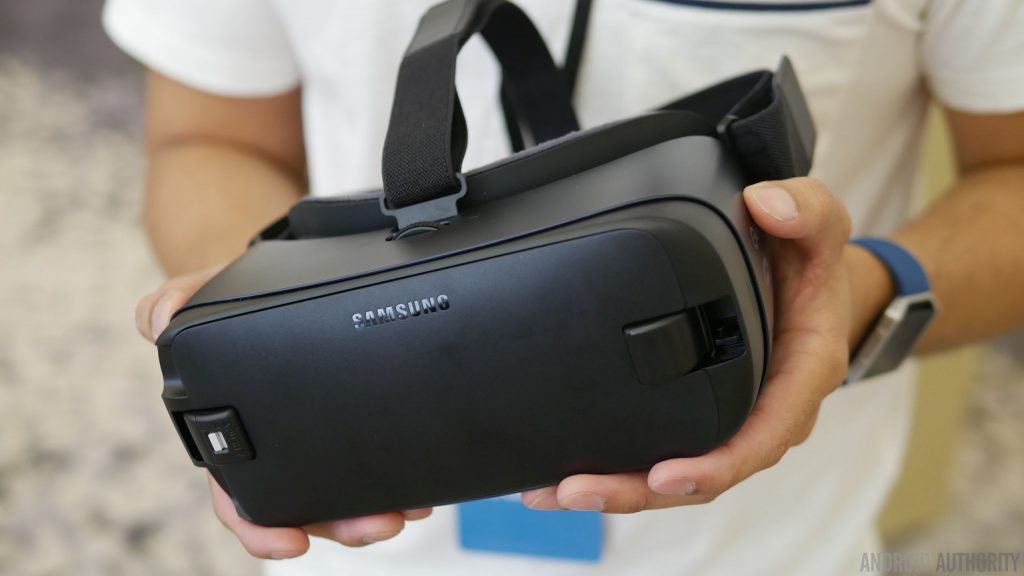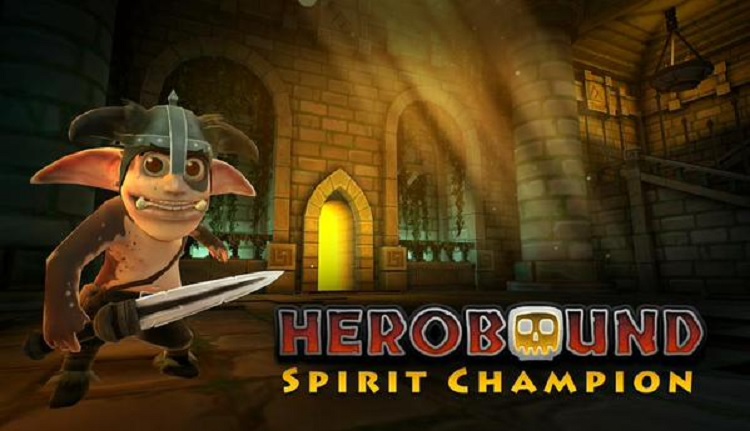
For many people, the very first taste of “modern day” VR will come from Google Cardboard. The reason for this is that Google Cardboard has a low price barrier for entry, with Google and even cellular carriers often giving away headsets in order to get people to give VR a try. But what if you’re looking for something a bit more advanced?
The best experiences in VR will come from the HTC Vive and Oculus Rift, with the upcoming Sony Playstation VR coming in at a very close third. That said, not everyone can afford, is are willing to spend, the $900 to $1600 that are required to dive into these ecosystems. That’s where the Samsung Gear VR comes in.
Table of Contents
What is Samsung Gear VR?
Breaking it down into its simplest form, the Gear VR is a VR unit that connects to your phone, as opposed to a computer or game system. While not as advanced as recent PC-powered VR solutions, the Gear VR was built in partnership with Oculus – the same guys behind the PC-centric Oculus Rift. That means you get Oculus Home as a storefront, and many of the same games — though obviously with considerably lower performance than you’d get with the Rift.
The Samsung Gear VR first debuted in 2014, alongside the Samsung Galaxy Note 4. In its original iteration, it was known as a ‘innovator’s edition’ and was primarily aimed at developers and early adopters. It was a bit on the clunky side and had when it came to apps and games, there wasn’t much there.

That said, Gear VR had a lot of potential. Unlike Cardboard, it’s sturdy plastic construction made it less of just a novelty item. It also differed from Google’s budget VR headsets in that it didn’t just rely on the sensors inside of the phone it was paired with, but instead came with a few of its own sensors for improved head tracking. The result was a richer, more immersive experience that was a little bit better suited for those who were prone to VR sickness.
In a second iteration in early 2015, Samsung brought a lighter design and plenty of improvements to its app store and UI that made it a much more compelling offer. This second version was still considered an “innovator’s” model, though this time it was designed with the Samsung Galaxy S6 and S6 Edge in mind.
By the year’s end, the commercial version of the Gear VR would finally arrive, right along with the new Note 5. This version would support all 2015 flagships, and in early 2016 would also add support for the Galaxy S7 and S7 Edge. And now more recently, Samsung introduced an updated 2016 model alongside the Note 7 (seen above). The newer model is all black, has some differences in the design of the built-in buttons, and goes from 96-degree FOV to 110-degrees. The same ecosystem of games and apps still applies to this updated model, however.
Bottom-line, the Gear VR has the distinction of being the first true VR platform available to the masses. Yes, we realize there is Google Cardboard, but calling it an organized platform isn’t exactly true. The Gear VR actually feels like a cohesive experience, making it the first compelling mainstream VR option.
What’s the catch?
There’s a lot like about the Samsung Gear VR, but it’s not without its drawbacks. First, it only works with a small handful of flagship class Samsung flagships. While the Galaxy S6/Edge, S7 series, and Note 5 are all really popular devices, Samsung is certainly leaving out a lot of users by keeping brands like LG, HTC, and Sony out of the mix.
Second, it’s really not ideal for long play sessions, and this is for two reasons. One reason is that its lower framerates means that you start to get a bit sick feeling after long stretches of Gear VR use. How long it takes to get to that point depends on the user, and even the game/app being used. It’s also not great for play sessions because extended use taxes the phone inside pretty heavily, and it can potentially overheat. This is less true with the Galaxy S7 family, but still worth of consideration.
Overall, if you’re looking for something to show off to friends and family, to view VR media, to play some occasional VR games, and don’t mind keeping play sessions to the 30 to 90 minute mark — you’ll love the Gear VR. Just don’t expect something totally flawless at its price range.
What are some of the key games?

There a number of great games out there for the Gear VR including:
- Land’s End
- Eve Gunjack
- Dreadhalls
- Minecraft
- Herobound : Spirit Champion
That’s just a small hint a what’s out there, but the bottom-line is that there are plenty of quality games, unlike Google Cardboard which mostly has nothing more than tech demos.
Check out: Best Samsung Gear VR games
Is Samsung Gear VR worth buying?
When we originally posed the question “Is Google Cardboard worth buying” we decided that with an investment as little as free to $20, yes, it was worth taking the plunge just to get to know what VR is like. At $99, providing you have a compatible Samsung phone, the Gear VR is a slightly bigger investment, so is it still worth it?
Absolutely. Just remember that Samsung Gear VR isn’t without limitations.
First, its refresh rates and lack of special cameras or sensors means that Gear VR doesn’t offer the same level of immersion as you’ll find with the Vive, Rift, or PS VR. That said, it does have improved capabilities over Cardboard and the existence of the “Oculus” software means you have a centralized app store experience that makes it easy to find great games and apps for your headset.
Once the novelty is worn off, most folks will toss Cardboard to the side and only bring it out when they want to have friends and family try VR for the first time. Will the same thing happen with Gear VR? Yes and no. Oculus and Samsung have done a pretty solid job of attracting developers to the Gear VR and so there’s at least a few new apps popping up every month. And unlike Cardboard, there are games here that actually take hours to complete, instead of just being short tech demos (which is what you’ll mostly find with Cardboard).
At the end of the day though, if you’re looking for long-term support and bigger, more console-quality games, you’ll really need to invest in a more expensive VR device like the Oculus Rift, HTC Vive, or Sony Playstation VR.
